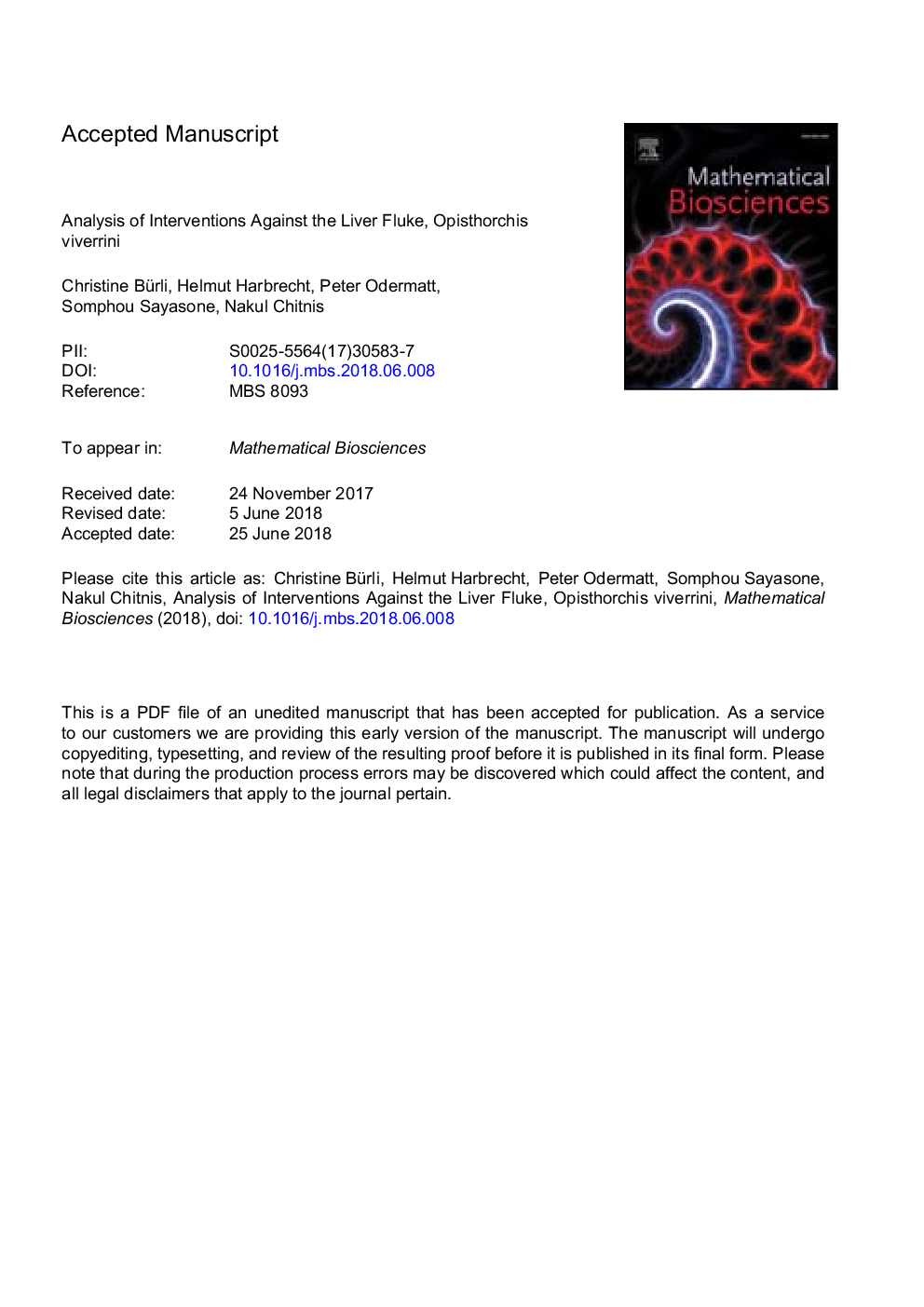| Article ID | Journal | Published Year | Pages | File Type |
|---|---|---|---|---|
| 8876960 | Mathematical Biosciences | 2018 | 30 Pages |
Abstract
We adapt a population-based model of Opisthorchis viverrini transmission dynamics to determine the effectiveness of three different interventions. The model includes the definitive hosts, humans; the reservoir hosts, dogs and cats; and the intermediate hosts, snails and fish. We consider the interventions: education campaigns to reduce the consumption of raw or undercooked fish, improved sanitation and treatment through mass drug administration. We fit model parameters to a data set from two islands in southern Lao PDR. We calculate the control reproduction number, simulate different scenarios and optimise the interventions with optimal control. We look at the potential of the interventions to eliminate transmission within 20 years. The model shows that education and improved sanitation need a very high coverage to fulfil the goal of elimination, whereas annual drug distribution at medium coverage is sufficient. The best solution is a combination of drug distribution at a medium level of coverage and as high as possible coverage of education and improved sanitation.
Keywords
Related Topics
Life Sciences
Agricultural and Biological Sciences
Agricultural and Biological Sciences (General)
Authors
Christine Bürli, Helmut Harbrecht, Peter Odermatt, Somphou Sayasone, Nakul Chitnis,
